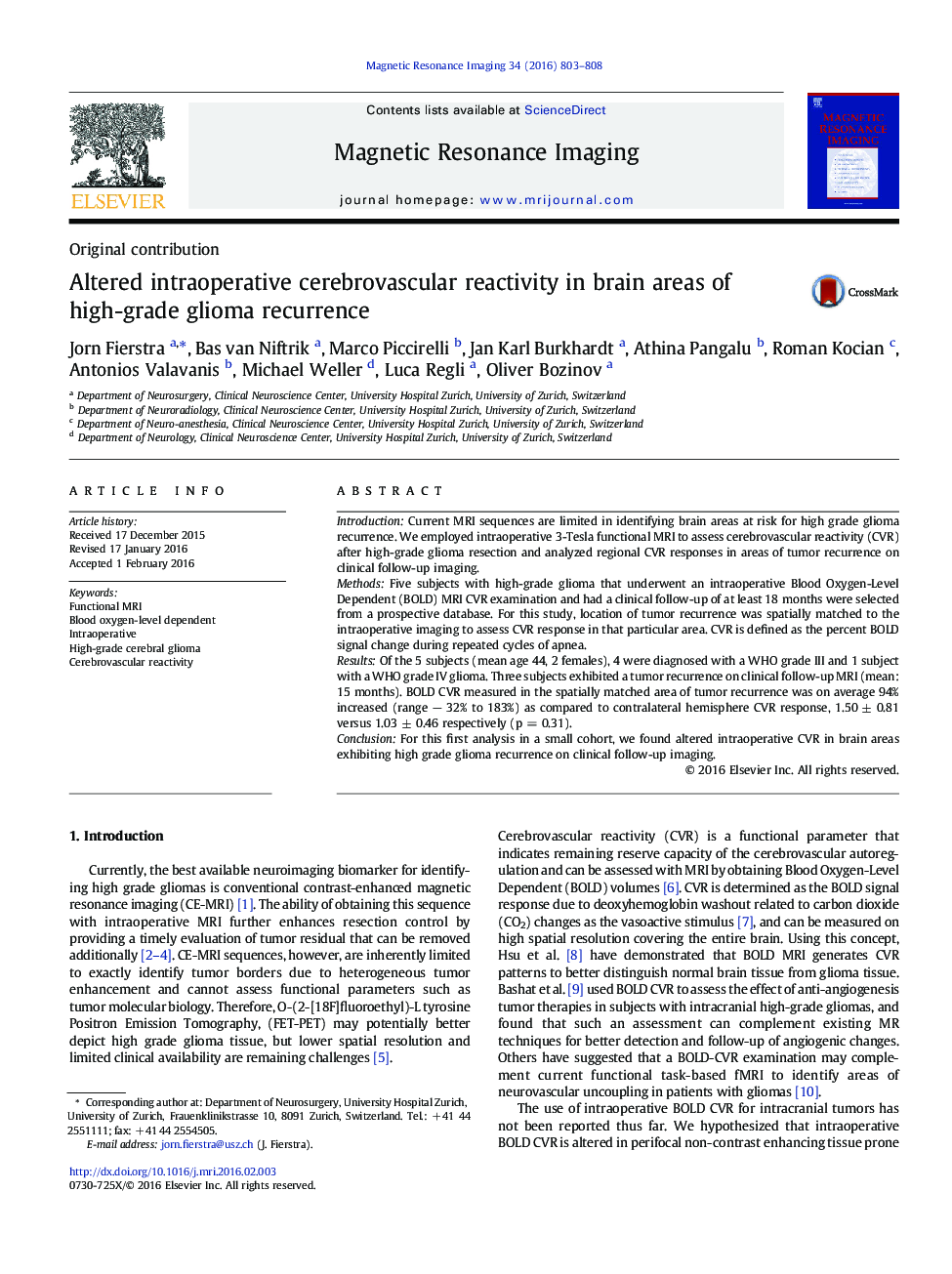| Article ID | Journal | Published Year | Pages | File Type |
|---|---|---|---|---|
| 1806141 | Magnetic Resonance Imaging | 2016 | 6 Pages |
IntroductionCurrent MRI sequences are limited in identifying brain areas at risk for high grade glioma recurrence. We employed intraoperative 3-Tesla functional MRI to assess cerebrovascular reactivity (CVR) after high-grade glioma resection and analyzed regional CVR responses in areas of tumor recurrence on clinical follow-up imaging.MethodsFive subjects with high-grade glioma that underwent an intraoperative Blood Oxygen-Level Dependent (BOLD) MRI CVR examination and had a clinical follow-up of at least 18 months were selected from a prospective database. For this study, location of tumor recurrence was spatially matched to the intraoperative imaging to assess CVR response in that particular area. CVR is defined as the percent BOLD signal change during repeated cycles of apnea.ResultsOf the 5 subjects (mean age 44, 2 females), 4 were diagnosed with a WHO grade III and 1 subject with a WHO grade IV glioma. Three subjects exhibited a tumor recurrence on clinical follow-up MRI (mean: 15 months). BOLD CVR measured in the spatially matched area of tumor recurrence was on average 94% increased (range − 32% to 183%) as compared to contralateral hemisphere CVR response, 1.50 ± 0.81 versus 1.03 ± 0.46 respectively (p = 0.31).ConclusionFor this first analysis in a small cohort, we found altered intraoperative CVR in brain areas exhibiting high grade glioma recurrence on clinical follow-up imaging.
